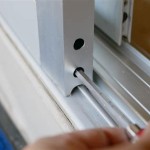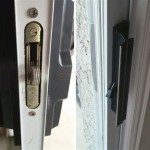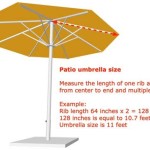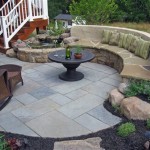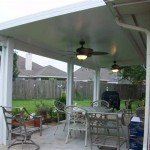Sliding Patio Door Lock Security Bolt Size Chart
Sliding patio doors offer convenient access to outdoor spaces and ample natural light. However, their inherent design can sometimes present vulnerabilities regarding security. Reinforcing these doors often involves using security bolts, but selecting the appropriate size is crucial for effectiveness. This article will explore the importance of security bolt sizing for sliding patio doors and provide guidance on choosing the right size for different applications.
Understanding the mechanism of a sliding patio door is essential for appreciating the role of security bolts. These doors typically operate on a track system, with one panel fixed and the other sliding horizontally. This sliding mechanism, while convenient, can create a potential gap that intruders might exploit. Security bolts act as a secondary locking mechanism, preventing the sliding panel from being forced open, even if the primary lock is compromised.
The size of a security bolt directly relates to its strength and effectiveness. Generally, larger bolts offer more resistance against forced entry. Bolt size is usually measured by diameter and length. Diameter refers to the thickness of the bolt shaft, while length indicates the portion of the bolt that extends into the door frame or the adjacent wall. Both measurements are crucial in determining the overall security provided by the bolt.
Determining the appropriate security bolt size involves considering several factors. The material of the door frame plays a significant role. For wooden frames, longer bolts are generally preferred to ensure sufficient anchoring into the solid wood. Metal frames, on the other hand, might require shorter bolts depending on the frame's thickness and construction. The specific design of the sliding door also influences the choice of bolt size. Some doors have pre-drilled holes or reinforced areas that dictate the maximum bolt length that can be used.
While there isn't a universally standardized size chart for sliding patio door security bolts, general guidelines can be followed. For wooden frames, a bolt diameter of at least 1/2 inch and a length of 3 to 4 inches is often recommended. Metal frames might require a slightly smaller diameter, around 3/8 inch, with a length of 1 to 2 inches. However, these are only general recommendations. Consulting with a security professional or a hardware specialist is advised for specific door types and security requirements.
Beyond diameter and length, the material of the security bolt is another critical factor. Solid brass or hardened steel bolts offer superior strength and resistance to tampering compared to softer metals. The type of bolt head also matters. Flat-headed bolts can be easily concealed and offer a cleaner aesthetic, while mushroom-headed bolts provide enhanced security due to their larger surface area, making them more challenging to remove forcibly.
Installing security bolts correctly is as important as choosing the right size. Accurate measurements and proper drilling techniques are necessary to ensure the bolt engages effectively with the door frame or wall. Using appropriate anchors, especially for hollow walls or less dense materials, is crucial for maximizing the bolt's holding power. Incorrect installation can compromise the bolt's effectiveness and weaken the overall security of the door.
Several types of security bolts are available for sliding patio doors, each with its own advantages. One common type is the flush bolt, which is installed into the edge of the sliding panel and engages with a strike plate on the door frame. Another type is the surface-mounted bolt, which is attached to the face of the door and extends into the frame or wall. A third option is a floor-mounted bolt, which is installed into the floor and engages with a bracket on the bottom of the sliding panel. Choosing the right type depends on the specific door design and desired level of security.
In addition to security bolts, other measures can enhance the security of sliding patio doors. Reinforcing the existing lock with a security plate can deter attempts to force the lock open. Installing a security bar or a dowel in the track can prevent the door from sliding open. Using window film or security glass can further strengthen the glass panels and prevent break-ins. Combining these measures with appropriately sized and installed security bolts creates a comprehensive security solution.
Maintaining sliding patio door security bolts is essential for their continued effectiveness. Regularly inspecting the bolts for signs of wear or damage is recommended. Lubricating the moving parts of the bolts can ensure smooth operation and prevent sticking. Tightening any loose screws or bolts maintains a secure fit. Addressing any issues promptly helps to prevent potential security vulnerabilities.
Enhancing the security of sliding patio doors through the use of security bolts is a proactive step toward protecting a home. Choosing the appropriate bolt size, material, and type, along with proper installation and maintenance, are crucial for maximizing their effectiveness. By taking these factors into account, homeowners can significantly improve the security of their sliding patio doors and enjoy peace of mind.

Toledo Patio Door Silver Security Bolt Tdp02 S The Home Depot

Patio Door Silver Security Bolt Tdp02 S

Veranda Patio Door High Security Foot Bolt Lock

Patio Door Lock Enhanced Home Security Adjustable Easy Installatio

Truth Sliding Patio Door Foot Bolt Security Lock

Era Saracen Patio Door Key Lock Security Bolt In Brown Silver Or White

Veranda Patio Door High Security Foot Bolt Lock

Patio Door Silver Security Bolt Tdp02 S

Veranda Patio Door High Security Foot Bolt Lock

Patio Door Lock Enhanced Home Security Adjustable Easy Installatio
Related Posts


